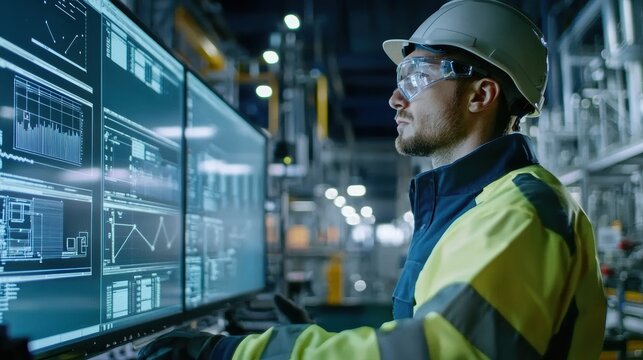The reliability and efficiency of machines are critical to any manufacturing or production line. However, understanding the common causes of machine failure can help industry quality assurance professionals anticipate and prevent potential issues, ensuring smooth operations and minimizing downtime. In this article, we explore the various factors that contribute to machine failures and provide insights on how to mitigate them effectively.

Understanding Machine Failure
Machine failure occurs when equipment unexpectedly stops performing its intended task. This can lead to costly downtime, production losses, and even safety hazards. Identifying the common causes of machine failure is crucial for maintaining optimal plant operations.
1. Poor Maintenance Practices
One of the leading causes of machine failure is inadequate maintenance. Regular inspections, cleanings, and timely repairs are essential to keep equipment functioning properly. Not only does this prolong the life of the machine, but it also helps prevent unexpected breakdowns.
2. Overloading Machines
Machines have specific capacities, and exceeding these limits can lead to wear and tear or immediate failure. It is important to adhere to manufacturer’s guidelines regarding load capacities to avoid unnecessary stress on equipment.
3. Human Errors
Mistakes made by operators can result in machine failures. This includes everything from improper machine setup to incorrect operation under production pressure. Continuous training and clear operating procedures can reduce human error.
Preventive Maintenance and Its Importance
Preventive maintenance is a proactive approach that involves regular and planned inspections and servicing of equipment. This is essential to identify potential problems before they become serious issues. Learn more about Quality Controls and how they’re implemented.
Case Study: Semiconductor Wafer Polishing Inspection
In the semiconductor industry, failures during wafer polishing can be catastrophic. Advanced stroboscopic event detection plays a vital role in monitoring these processes. Discover more in our detailed look at Event Detection.
Environmental and External Factors
External conditions such as temperature, humidity, and dust can greatly affect machines’ performance and lifespan. It’s essential to monitor these conditions and ensure that your operating environment is within the specified range for your equipment. Check out external factors affecting equipment longevity.
Reactive Maintenance: A Reactive Approach
Although reactive maintenance can sometimes resolve immediate machine issues, it often leads to higher costs and extended downtime. It is typically seen as a response to a machine’s failure, such as unexpected breakdowns.
Age and Fatigue of Machines
Just like any other component, machines deteriorate with age. Component fatigue can result in frequent breakdowns. Understanding the lifecycle of your equipment is key in planning for replacements and upgrades.
Human Factors and Training
Human factors play a large role in the effectiveness of machine operations. Continuous operator training ensures that staff is familiar with the equipment and can handle it correctly, minimizing the risk of breakdowns.
Material Defects and Manufacturing Errors
Sometimes, machines are made with defective components. These defects might not be apparent immediately but could lead to frequent failures. Emphasize quality control during the manufacturing process to avoid these issues. You might read about mitigation strategies related to machine failure.
Importance of Machine Upgrades
Machines that aren’t regularly updated with the latest technology and parts are more prone to failures. Regular upgrades ensure that machinery is operating at peak performance levels.
Strategies to Prevent Machine Failures
To avoid the common causes of machine failure, consider implementing strategies such as frequent maintenance checks, employing the latest technology for monitoring, and maintaining a conducive work environment. For instance, utilizing Dynamic Stroboscopes can aid in preventative measures.
Monitoring and Predictive Maintenance
Utilizing predictive maintenance technologies helps companies anticipate failures and plan maintenance activities beforehand, minimizing downtime and extending the life of machinery.
Conclusion
By understanding these common causes of machine failure and adopting proactive measures, you can ensure longer longevity of machines and improved productivity. This not only safeguards against unexpected expenses but also secures seamless operations across all sectors.

FAQ
What is the most common cause of machine failure?
The most common cause is often poor maintenance practices, including irregular service schedules and ignoring minor defects.
How can human error be minimized in machine operations?
Through continuous training, studying new machine manuals, and developing clear operating procedures.
What role does modern technology play in preventing machine failures?
Modern technology helps improve diagnostics and predictions, effectively reducing the risk of unexpected failures by monitoring machine conditions 24/7.
This article contains affiliate links. We may earn a commission at no extra cost to you.
